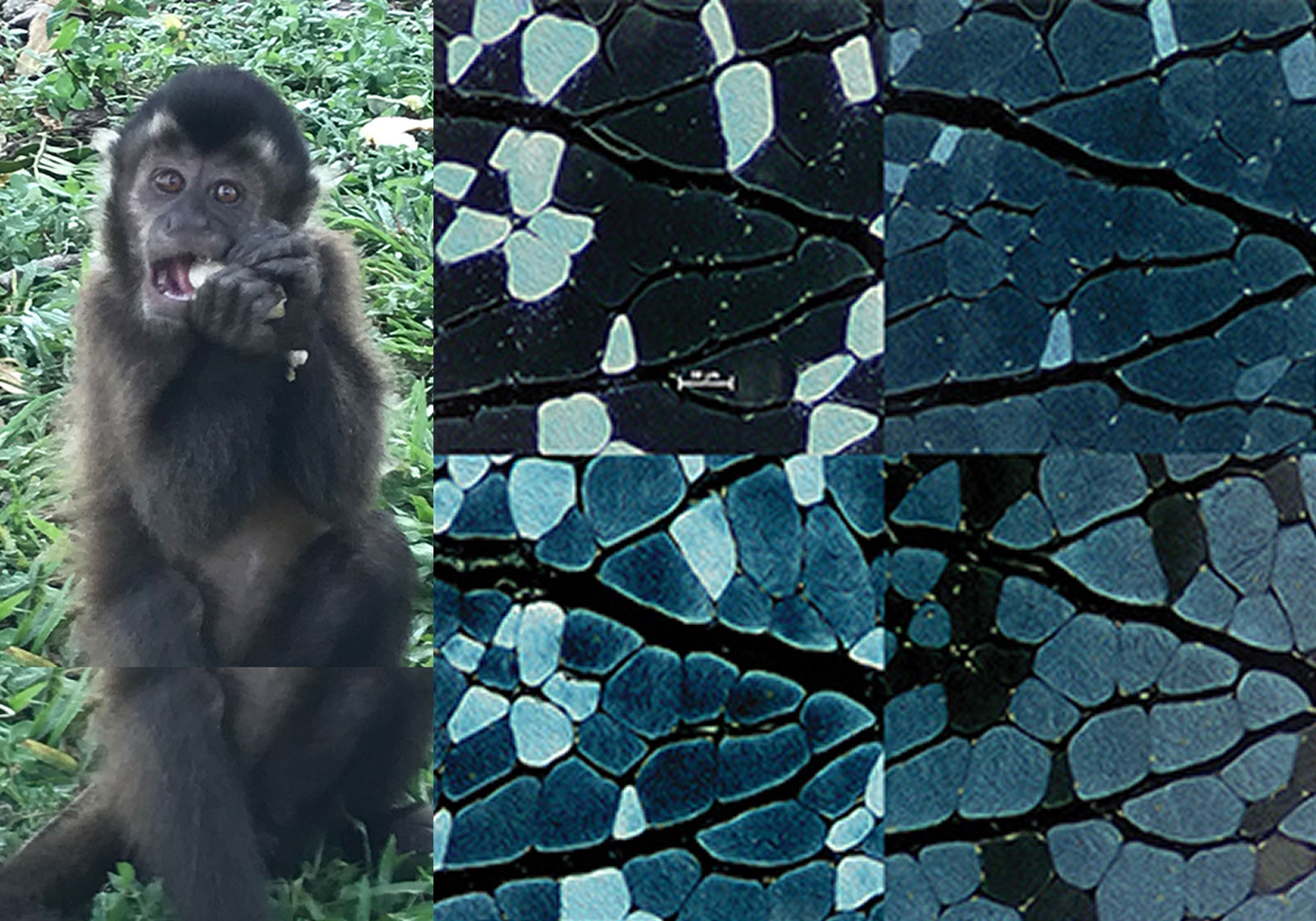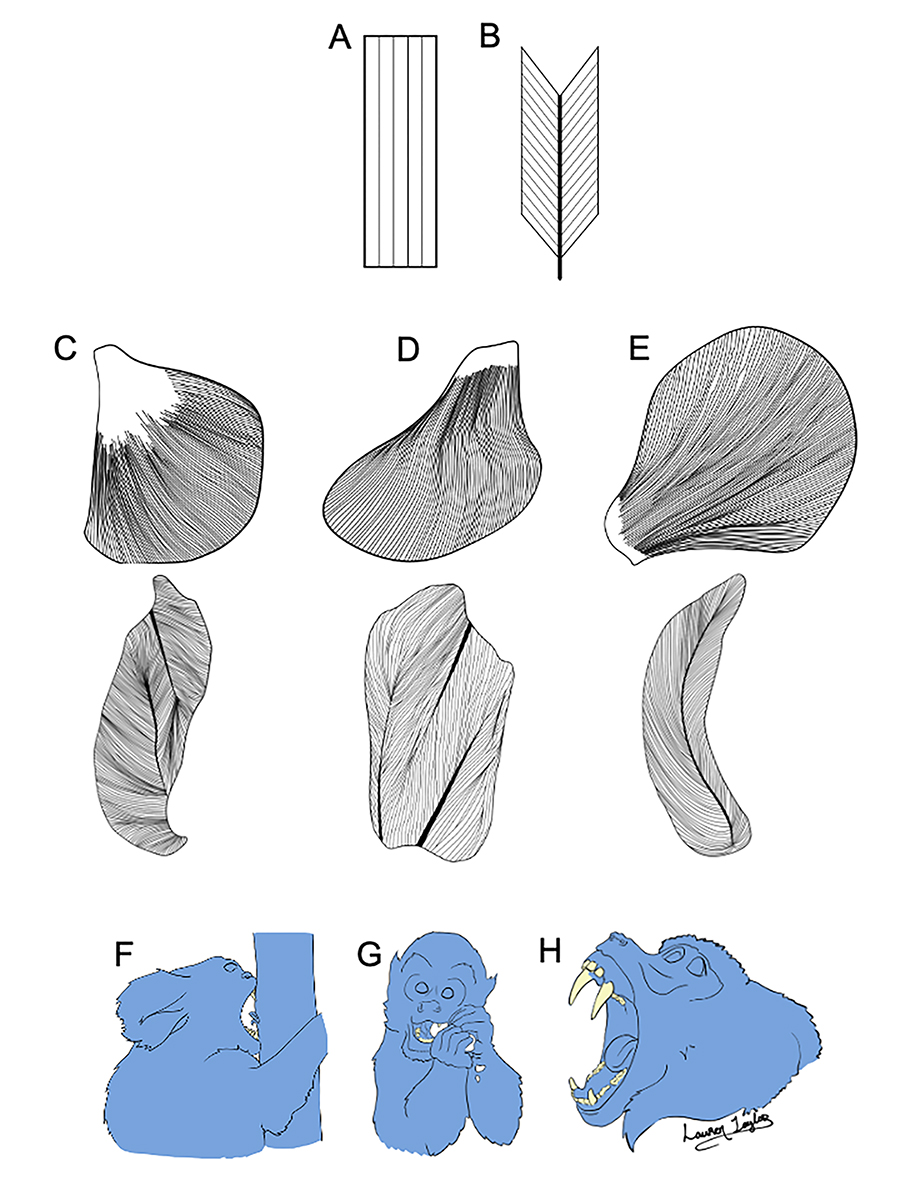
Chewing Muscle Fiber Architecture
We study scaling relationships of jaw-muscle architecture and musculoskeletal correlates of the primate feeding system and feeding behavior/diet.
Primates face ecological challenges associated with gaining access to and processing available food resources. Gape (mouth opening) and bite force are key performance variables, and these two performances cannot be simultaneously maximized without modifying other aspects of the masticatory apparatus. Our architectural studies of the jaw-closing muscles are focused on how animals meet these competing demands.
We have been exploring how key determinants of muscle stretch (fiber length) and muscle force (physiological cross-sectional area, PCSA), scale with body and skull size and muscle leverage and testing hypotheses of jaw-muscle architecture, function and evolution in relation to both dietary variation and social signaling and aggressive biting behaviors. In collaboration with PIs Dr. Janine Chalk-Wilayto (Mercer University), Dr. Megan Holmes (Duke University), Dr. Myra Laird (University of Pennsylvania), and Dr. Claire Terhune (University of Arkansas), we are also testing hypotheses about how jaw-adductor fiber architecture changes during ontogeny in the hard-object feeding tufted capuchin monkey. View Dr. Taylor's ResearchGate page for publications resulting from this work.

In this image:
